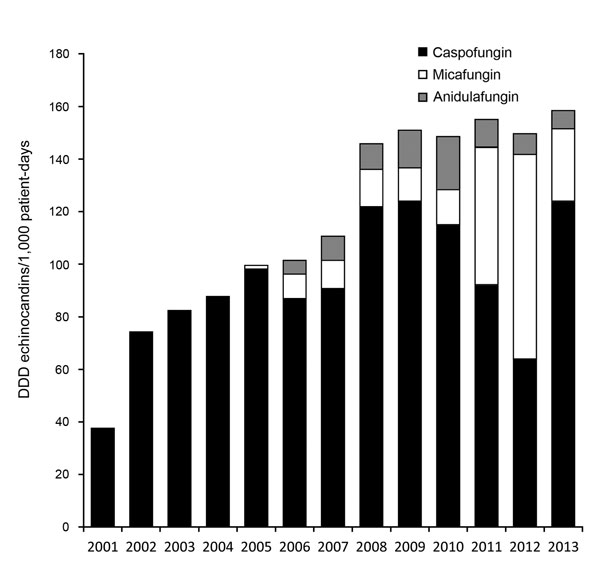Volume 21, Number 11—November 2015
CME ACTIVITY - Synopsis
Uncommon Candida Species Fungemia among Cancer Patients, Houston, Texas, USA
Figure 2

Figure 2. Increasing annual use of echinocandin antifungal drugs at the University of Texas MD Anderson Cancer Center, Houston, Texas, USA, January 2001–September 2013. Spearman’s correlation coefficient r = 0.98, p<0.0001. DDD, defined daily doses.
1These authors contributed equally to this article.
2Current affiliation: Warren Alpert Medical School of Brown University, Providence, Rhode Island, USA.
Page created: October 19, 2015
Page updated: October 19, 2015
Page reviewed: October 19, 2015
The conclusions, findings, and opinions expressed by authors contributing to this journal do not necessarily reflect the official position of the U.S. Department of Health and Human Services, the Public Health Service, the Centers for Disease Control and Prevention, or the authors' affiliated institutions. Use of trade names is for identification only and does not imply endorsement by any of the groups named above.